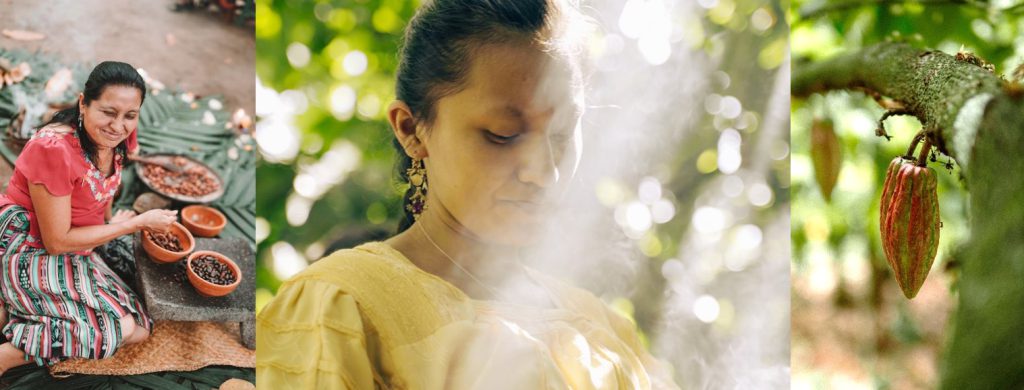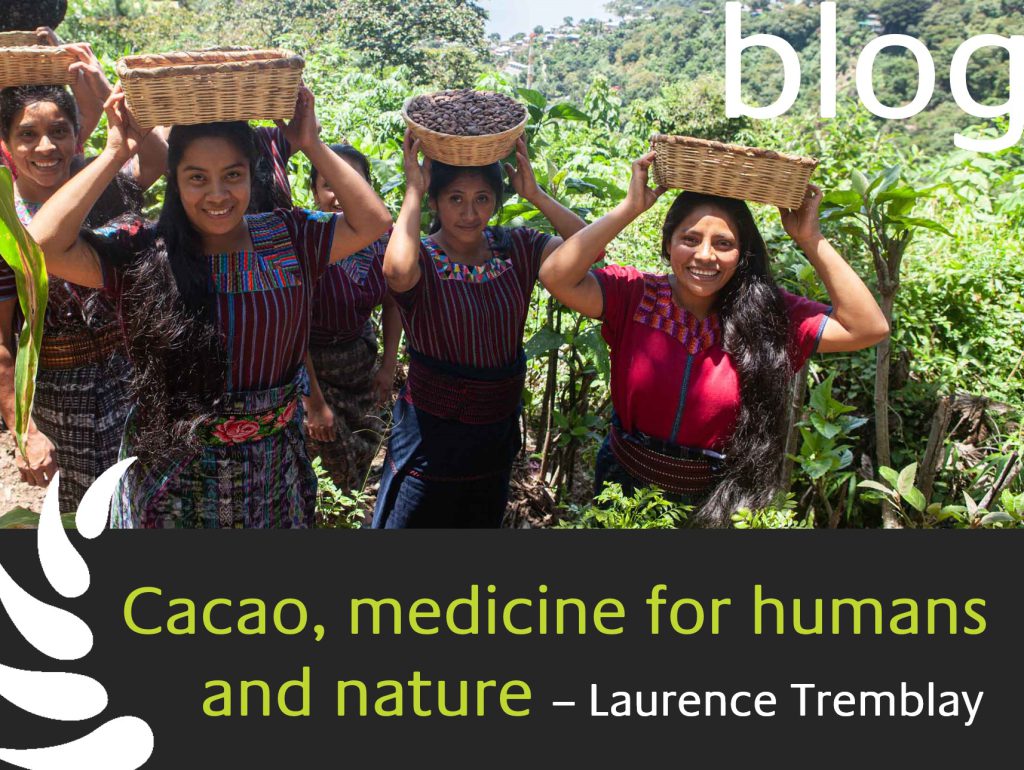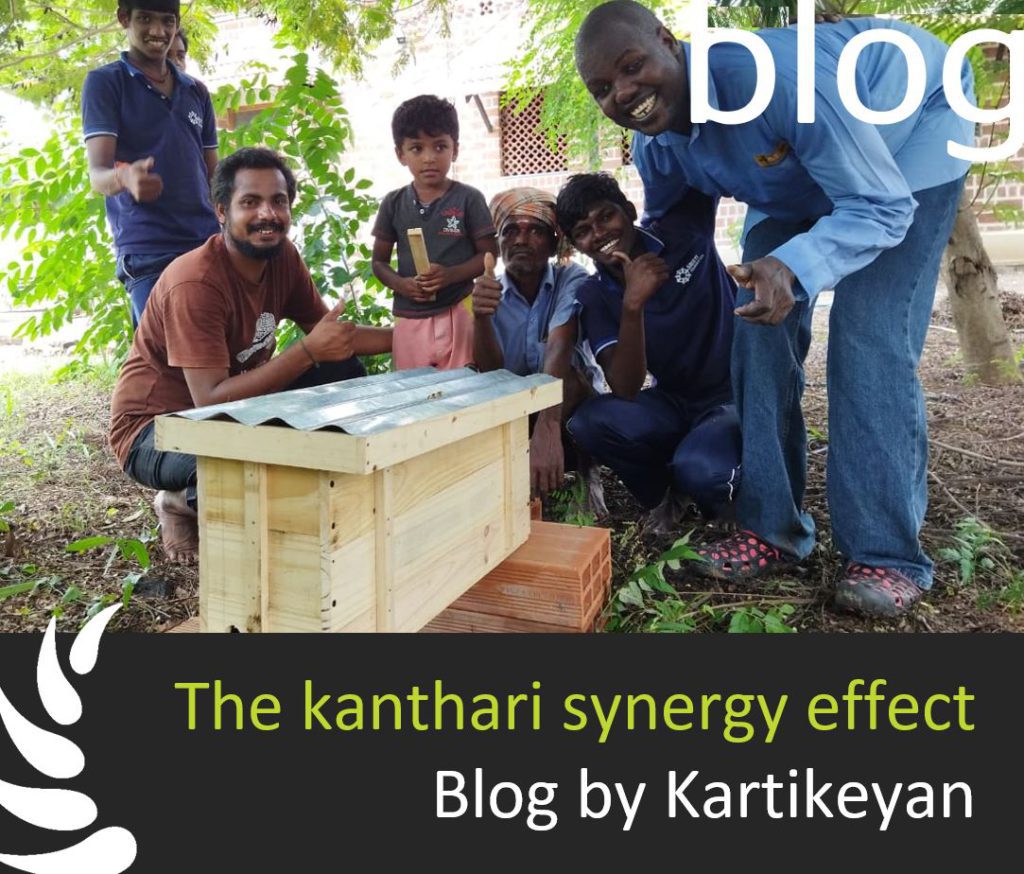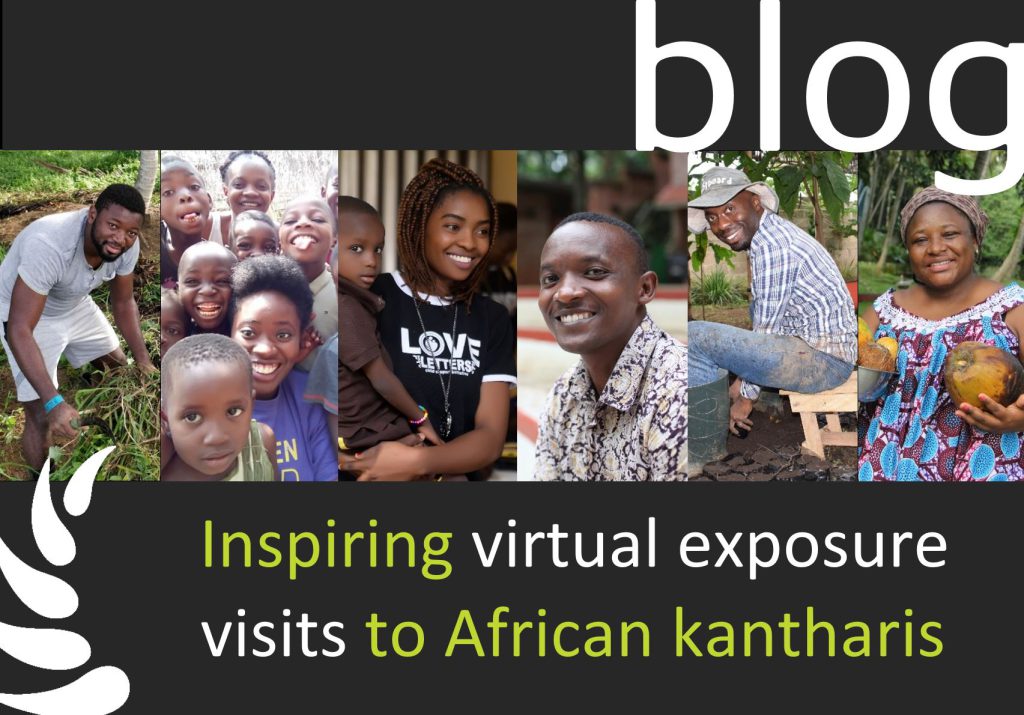Now that the 2022 edition of the kanthari course has started, the blog posts will be mainly about those who benefit(ed) from their initiatives. We learn more about their (future) beneficiaries, after all, the positive impact that will be created in their lives, is also the goal we have here at kanthari.
Today’s blog is about the beneficiaries of Laurence, a young woman from the French part of Canada who advocates for the rights of female cocoa farmers in Guatemala.
Cacao, medicine for humans and nature
by Laurence Tremblay
I arrived in Guatemala in a small Kaqchikel village in the highlands. An hour away from this village is where we find some of the best cacao in the world. Interestingly, when you ask for cacao in the village, a child will run happily to the closest market and get you a Nestle chocolate bar – the bar of chocolate that is also responsible for modern child slavery, deforestation of African rainforests, and much more. Meanwhile, close by, the best cacao grows in abundance in the backyard of most households.
I met two persons who soon became not only friends but also business partners. They shared the same vision: to connect consumers of cacao to the source of its production while using cacao for social change and as an advocate for the environment.
We would spend lots of time in the rural areas and find the few gems of small-scale locally owned organic farms. The first farm we connected with is called Nuevo Amanacer, located in the Suchitepequez region of Guatemala, and is led by a women’s collective. The leader, Odylia, inherited the land from her father and chose to care for it with a group of women. Together, they created cacao paste blocks and worked independently from men. At first, when we spoke with Odylia, she said that they were organic and environmentally friendly as this would provide a better opportunity to sell the cacao. However, when we started to take a closer look. we would find lots of trash in the forest and after digging some more, realized that the cacao production was not 100% organic. We kept working with them, reinforcing the importance of healthy soil and sustainable methods. With time, they started to take more actions to meet our organisation source cacao‘s standards, and now they do share their work with lots of pride.
They come from a simple way of life and when we first met, the collective was running their operation in a very small house with an outdoor rustic kitchen. Odylia and her daughters are smart and recognize opportunities when they come along. Although they are from a very small and traditional village, they are open to new ways of working, and now they belong to the first family that is connected with the international world.
In rural areas, especially around the Suchitepequez region where a farmer may earn 50 quetzales (about $7USD) a day, having a group of women leading a successful business is an incredible inspiration. After years of bringing groups of foreigners to the farm, we saw the daughters of Odylia growing and gaining confidence. Odylias’ 19 years old daughter Evelyn took on the role of presenter, demonstrating the processing of cacao. She shared her eagerness to learn English, and during our last conversation, she proudly shared that in one year, the presentation would be done in English.
Two years later, Juan, a village neighbor who we met through our explorations by walking through the area, had found an interest in growing organic cacao, as he understood that working with our organization would be an opportunity to get access to the market. With the mono-culture of rubber in the surrounding area, and its inconsistent value in the market, rubber is currently back up in price and farmers seek financial security through it. In the past, however, many farmers lost money when the rubber price dropped. With Juan and other farmers, we seek to offer an alternative means to make a livelihood, working on a resilient agroforestry system and a market for their yield. In the case of Juan, we organized a regenerative social business workshop, that included the steps necessary to meet the organic standard, so we could purchase cacao from him.

He worked hard for a year, until one day, he was ready to sell us his first harvest. Juan is the consequence of a neighborhood that has been inspired by good practices and saw the opportunity for growth inside a devastated land that had over 50% of the population inactive in Guatemala’s economy.
Many mono-culture rubber and coffee farmers have shared their interest in diversifying their practices but fear financial repercussions. They are ready to make a change but are asking for financial and educational support. A lot of them have lived through the civil war, the decline of the coffee and rubber market, and the racism against indigenous people in the country, leaving farmers and their families with very few opportunities and pride. As I walk through the streets of a rural, outdoor Friday market, one of the vendors asks me what I do in his town. Why would I want to be in Chicacao? I understood by looking into his eyes that he meant that his town had nothing to offer to a foreigner. The town he spoke about was the town that once in history, was known to be the “Gateway of Cacao” in the Mayan civilization. It is located at the bottom of mountains and is connected to the pacific coast giving it the perfect climatic conditions for the cultivation of crops, there is an abundance of water, and it is incredibly lush. Does this place have no value???
In these days, Odylia and her collective have expanded the house and a very nice and spacious kitchen to process cacao and match their demand was added. Since their farm can’t fulfill the need for cacao seeds they are selling, they started working with neighbor farmers while still keeping the management of the project under women’s hands.
As the cacao market is one of the most criticized for its breaching of human rights around the world and deforestation state in Africa; Odelia & Evelyn become an example of a sustainable approach to cacao farming and inspirational change for women, community, and nature.



